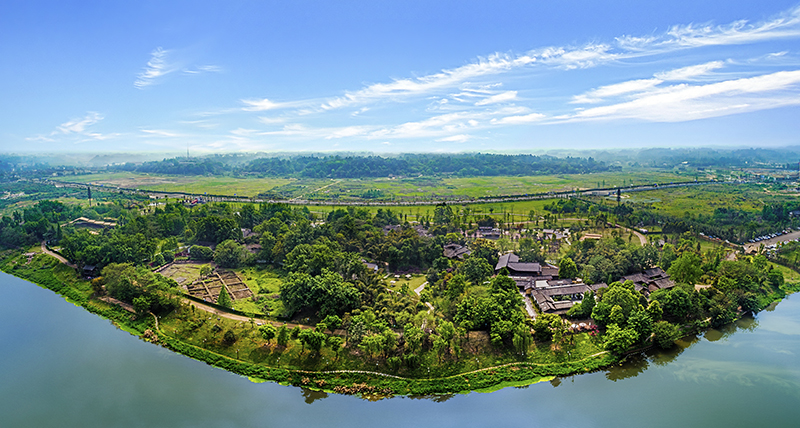
“Qiong Kiln”, the generic term for Qiong Kiln relics and artifacts unearthed or handed-down, enjoys a comparable value as Sanxingdui Ruins and Jinsha Site. It is one of the key national cultural relic protection projects. Originated in Sui Dynasty, Qiong Kiln thrived in Tang Dynasty and went downhill during Song Dynasty. With over 800 years of pottery firing, Qiong Kiln not only represents the folk arts of celadon porcelain in Sichuan, but also is one of the most renowned folk kilns in China. Scattering in Qionglai, Qiong Kiln can be found in various ancient kiln sites, including Shifangtang in Shifangtang Village of Linqiong Town, Wayao Mountain in Gongyi village of Guyi Town, Jianshanzi in Xihe village of Linqiong Town, Baihe in Dayu Village, and Chaichong in Xihe village, etc. Qiong Kiln has been sorted as a series of the folk celadon in Qionglai from Northern and Southern Dynasties to Song Dynasty, winning the crown of “Qiong Kiln Series” and “Birthplace of Chinese Decorative Porcelain” in the academic field.
Among diverse Qiong Kiln sites, the most representative one is the one in Shifangtang.
Located in Shifangtang Village of Linqiong Town, Shifangtang Qiong Kiln Site forms a strip along South River, covering a wide area of 111,300 m2. The kiln site extends 530 meters from the east to the west, and 210 meters from the south to the north. There are 14 kiln houses and kiln sites being preserved now, which are in different sizes, heights and distances between each other. The biggest can reach a diameter of approximately 60 meters, while the smallest is just about 25 meters; the highest is around 11 meters, while the lowest is around 6 meters. Around kiln houses, there are many kiln tools and ceramic chips being covered. Shifangtang Qiong Kiln Site is known by the world for its largest number of preserved kiln houses, the largest covering area of relics, the longest history of pottery firing, and the top production and circulation of porcelain.
On May 25, 2006, the State Council approved to add “Qiong Kiln Site” —combined with the Qiong Kiln sites of Shifangtang, Wayao Mountain and Dayu—as one of the Major Historical and Cultural Site Protected at the National Level.